I have never read a book twice but this time I knew I had to. I had been dealing with relentless back pain for a few weeks. The book was Norman Doidge’s The Brain’s Way of Healing .
Why reread this book?
Doidge writes in great detail about the fairly new discovery of brain neuroplasticity – the concept that the brain can and does change. What I was specifically wanting to reread was Doidge’s account of the impressive and exciting work of Dr. Michael Moskowitz’s on changing the brain from reacting to pain.
![]() Pain lasting more than a few weeks made me ready to try anything. Taking medicinals like Aleve had lessened the pain a little, so had CBD. However the pain was worsening and spreading from my original 30 year old back injury – a herniated disc in the lumbar-sacral area – to my left hip and down my thigh.
Pain lasting more than a few weeks made me ready to try anything. Taking medicinals like Aleve had lessened the pain a little, so had CBD. However the pain was worsening and spreading from my original 30 year old back injury – a herniated disc in the lumbar-sacral area – to my left hip and down my thigh.
So I started rereading all the information on Moskowitz’s work where he talks about reframing the brain map from one that is hyperreactive to pain to creating new brain patterns. With acute pain there are specific sets of neurons that react with a pain response. Yet with chronic persistent pain, the neurons create more and more connections to other neurons building a brain map that now covers more territory. I was actually feeling that as my pain moved from my lower back to my hip to my thigh – more of my body territory was now engaged in the pain response. I was desperate. This growing pain was zapping my energy and mood. I couldn’t sit for very long without the pain occupying my every thought. And since much of my work is on the computer this was devastating.
NEURONS THAT FIRE TOGETHER WIRE TOGETHER
So how did Moskowitz take advantage of neuroplasticity to help his patients? He had them visualize the brain pain map and see the neurons involved get smaller and smaller until no pain. I wanted to see those maps. Thanks to Google I discovered Moskowitz’s very informative and practical website. There you can see the various brain maps, watch videos that explain what’s going on as well as videos that are designed to help you release the pain. I especially practiced the one that adds sound to the whole experience.
These brain map images from Michael Moskowitz and Maria Golden©2015 neuroplastix.com
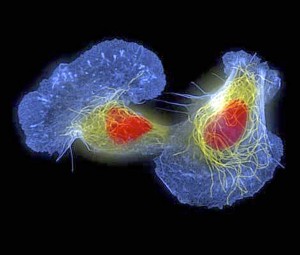 Since I am a believer in the healing power of sound, I am always willing to try that. After all our cells are string instruments. My own book Secrets of Your Cells goes into detail about the form and function of our cells, beyond the neurons. Inside of our cells is the cytoskeleton, made of fibers, tubes, filaments and strings that connect the whole cell to its parts, kind of like muscle and bone. It also regulates gene expression. This flexible and changing cytoskeleton vibrates, moves, stretches and of course, responds to sound. I had already discovered with students of mine how the simple act of humming M could change mood, sometimes ease pain and enhance the sense of self.
Since I am a believer in the healing power of sound, I am always willing to try that. After all our cells are string instruments. My own book Secrets of Your Cells goes into detail about the form and function of our cells, beyond the neurons. Inside of our cells is the cytoskeleton, made of fibers, tubes, filaments and strings that connect the whole cell to its parts, kind of like muscle and bone. It also regulates gene expression. This flexible and changing cytoskeleton vibrates, moves, stretches and of course, responds to sound. I had already discovered with students of mine how the simple act of humming M could change mood, sometimes ease pain and enhance the sense of self.
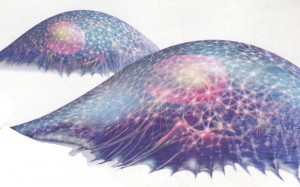 From Scientific American ©Slim Films Donald Ingber’s exciting research into the cytoskeleton and tensegrity
From Scientific American ©Slim Films Donald Ingber’s exciting research into the cytoskeleton and tensegrity
Moskowitz and Golden Therapeutic Animations
I watched Moskowitz videos and animations about letting go of pain especially the one with the singing bowls, visualized my brain changing so that the areas reacting to pain got smaller. I had remembered that a friend told me that the area of my disc damage and initial pain was in the 2nd chakra (deals with financial issues). I certainly was having financial issues so acknowledged that the chakra perspective mirrored my emotional and energy realities. So what, you say? There are so many levels to our pains – physical, emotional, spiritual, energetic. So I responded to what could have been the emotional underpinning to my old pain returning. What else could I do? I also took care of some very pressing financial issues and finally, I listened to my cells.
I had been walking and doing qigong but was afraid to do anything more physical. Would the pain get worse? My cells” told me” otherwise, I needed to move my whole body, go swim. I did. I swam for about 20 minutes and then sat in a very hot vigorous Jacuzzi for another 10. The day continued as always yet with no increase in pain from swimming. The next day no pain at all. Today is the 2nd week with no pain I feel this is a miracle since this pain began the week after Thanksgiving and nothing totally eliminated it. CBD lessened it a lot, much better than taking Aleve but this reshaping my brain and moving my body seems to be the way to go.
Got Pain?
What have you got to loose if you are suffering from persistent pain? For me it didn’t take weeks or months to experience relief. One day!! Perhaps it was short for me to get results because of my belief systems and knowing how our cells work. Once in awhile I do get a twinge when I sit too long. Easy soulutions. Get up and move, swim more, use sound and visualize changing brain pain maps, and letting go of worry.
This was such a profound experience I had to write about it. I was giving up hope that the pain would ever lessen so writing this for others who are experiencing persistent physical pain, check out this amazing work of Doidge and Moskowitz.
Healing tips
- Where in your body do you feel pain? Back, shoulders, neck?What’s the symbology related to this? Look into chakras, Louise Hay, your own ideas. Deal with those issues.
- Read Doidge’s books to gain an understanding of neuroplasticity.
- Visit Moskowitz’s Neuroplastix website, learn and engage with the therapeutic animations.
- Visualize your life as you want it to be
- Proven sensory strategies
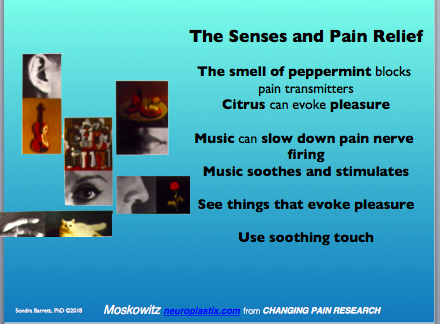
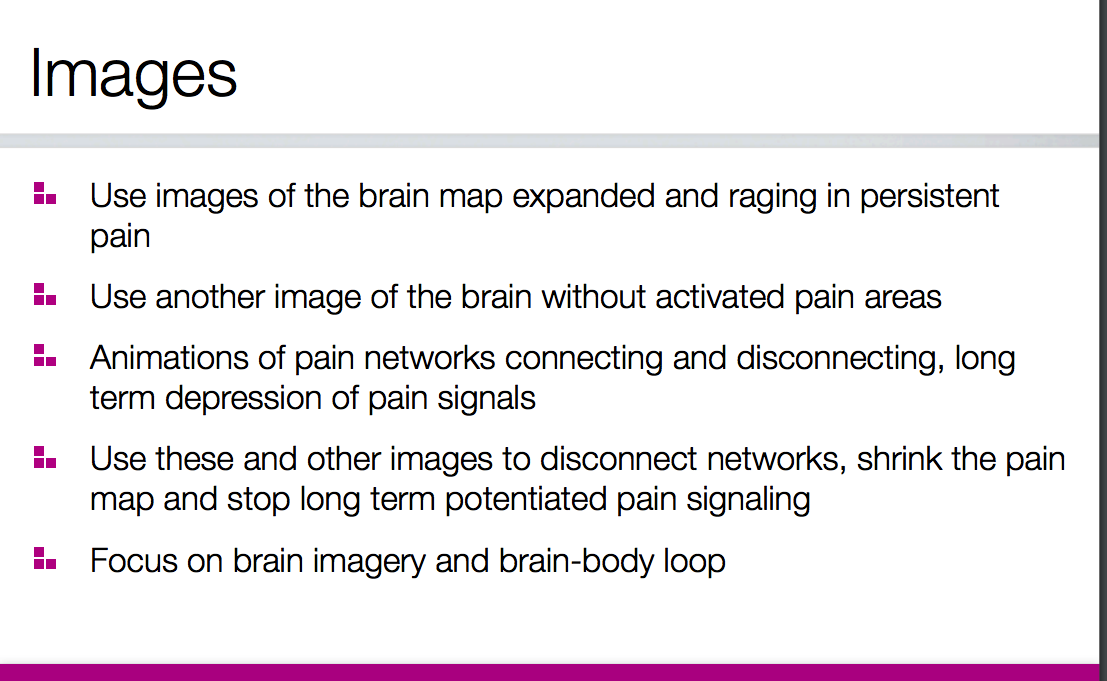
REFERENCES:
Ingber, Donald. Tensegrity II. How structural networks influence cellular information processing Donald E. Ingber Departments of Surgery and Pathology, Children’s Hospital and Harvard Medical School
Ingber, Donald. The Architecture of Life. Scientific American 1998.
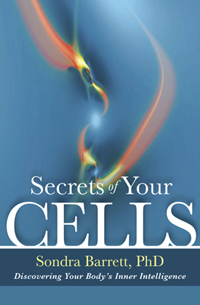 Barrett, Sondra Secrets of Your Cells: Discovering Your Body’s Inner Intelligence.
Barrett, Sondra Secrets of Your Cells: Discovering Your Body’s Inner Intelligence.
http://www.huffingtonpost.com/author/sondra-barrett
Links
http://www.childrenshospital.org/researchers/donald-ingber
http://www.neuroplastix.com/styled-99/therapeuticanimations.html


 CHRONIC PAIN
CHRONIC PAIN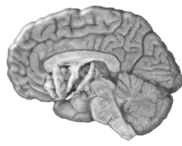 NO PAIN
NO PAIN